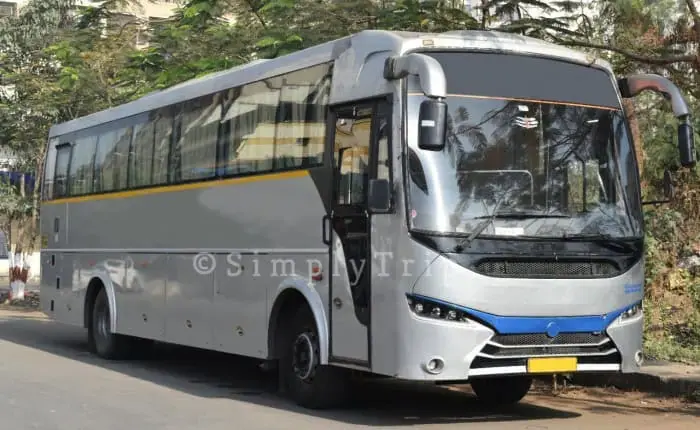Getting around Mumbai with a large group can be a real headache. Between the constant traffic jams, crowded streets, and the sheer sprawl of the city, sorting out transportation isn’t simple. But with a bit of local knowledge, this potential nightmare can actually become quite manageable.
The market for bus hire in Mumbai offers countless choices that might leave one feeling overwhelmed at first glance. From basic 15-seater tempo travellers to luxury coaches with surprising features, the options vary dramatically. The trick lies in matching your specific requirements with what’s actually available without overpaying for unnecessary extras.
Size of the Group: Critical Factor
The headcount changes everything about which vehicle makes sense. A family gathering of 12-15 needs completely different transport compared to a corporate outing with 45-50 employees.
Tempo travellers and minibuses carrying 12-25 travellers work brilliantly for smaller groups. They navigate Mumbai’s chaotic lanes more easily and can reach spots where larger vehicles simply cannot go.
Mid-sized buses holding 25-35 people hit a sweet spot between comfort and practicality for medium groups.
Larger groups of 35-50 people generally require standard coaches. Though less nimble in tight spaces, they eliminate the logistical mess of coordinating multiple smaller vehicles.
Booking too small means uncomfortable, cramped journeys. Too large? Wasted money and nightmarish parking situations.
Comfort Expectations: Distance Matters
Consider journey length honestly. A quick 30-minute hop to a nearby spot doesn’t warrant premium seating and entertainment. But day-long excursions to Lonavala or Alibaug? That’s when proper comfort becomes essential.
Basic options provide no-frills seating with perhaps air conditioning (though not guaranteed).
Mid-range buses include reliable AC, decent legroom, and sometimes basic entertainment.
Premium coaches feature pushback seats, individual AC vents, entertainment systems, WiFi, and occasionally even washrooms.
The cost difference between entry-level and premium can be quite steep. Perhaps your group doesn’t need all those fancy additions—or maybe they’re absolutely worth it for longer journeys.
Route Challenges: Mumbai’s Unique Layout
Mumbai’s geography creates distinct transport hurdles. The narrow bylanes of Colaba differ drastically from broader roads in Powai or Andheri.
Certain areas restrict large vehicle movement during specific hours. Others have low flyovers or tight corners that larger buses simply cannot handle.
Ask yourself:
- Will your trip include older South Mumbai areas with confined streets?
- Are you mainly using highways and main roads?
- Do you need to visit neighbourhoods with height or width limitations?
Rental companies sometimes gloss over these crucial details. A dependable provider should highlight potential route complications before booking confirmation.
Seasonal Considerations
Mumbai’s monsoon season (June through September) brings waterlogging that can strand larger vehicles. During these months, having several smaller vehicles might provide flexibility when roads become impassable.
Tourist season (November to February) requires booking well ahead, particularly for quality buses. Rates typically jump 15-25% during these peak months.
Summer (March to May) makes proper air conditioning absolutely non-negotiable. Verify the cooling system works effectively—many older buses have AC that struggles under full passenger load in extreme heat.
Budget Realities
The uncomfortable truth? Quality transport costs proper money. Cutting corners typically leads to breakdowns, frustrating delays, and thoroughly annoyed travellers.
Basic minibuses generally start around ₹4,000-5,000 for half-day local usage.
Mid-range vehicles typically cost ₹6,000-9,000 for similar durations.
Premium coaches with proper amenities can run ₹12,000+ per day, not counting extras like additional stops or overnight charges.
Many groups make the mistake of selecting based entirely on cost. A marginally higher initial expense often prevents costly headaches later.
Safety Priorities
Even the most luxurious bus means nothing if safety standards seem questionable. Look for:
- Vehicle age (preferably under 5-6 years)
- Maintenance documentation
- Driver experience and proper licensing
- Functional safety features (seatbelts, emergency exits)
- Company track record and genuine reviews
Some operators try passing off outdated vehicles as “classic” or “vintage.” Don’t buy it. Newer buses have better safety features and reliability.
Booking Timeframe
Last-minute arrangements rarely work out well. Good operators get booked weeks—sometimes months—beforehand.
For weekend trips, arrange at least 2-3 weeks ahead. For holiday periods, 4-6 weeks minimum. For premium coaches during peak season, 8-10 weeks isn’t excessive.
Too many groups wait until the final days, then wonder why they’re stuck with mediocre options or paying premium rates for standard service.
Making the Final Choice
After weighing these factors, request quotes from 3-4 trustworthy providers. Compare not just base rates but what’s actually included—hidden charges for tolls, parking, driver accommodation, or fuel surcharges can drastically alter the final bill.
Ask direct questions about cancellation terms and contingency plans for breakdowns. Reliable companies have backup arrangements and transparent policies.
Trust your gut feeling. If pricing seems suspiciously low, there’s probably a catch. If a company avoids straightforward questions, keep looking.
Selecting the right bus requires effort upfront but pays dividends through smoother, more pleasant journeys. Mumbai’s vibrant energy deserves to be experienced without transport worries spoiling the adventure.
Also Read–How AI Is Transforming Clinical Trials in Australia


